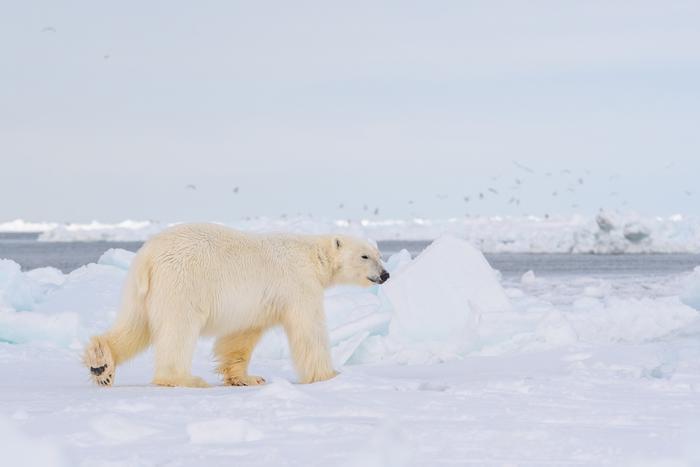“It is particularly challenging, expensive, and time-consuming to find polar bears in the Arctic, let alone count them and understand how they are coping with climate change,” said Dr. Melanie Lancaster.
Can scientists use DNA from polar bear footprints to help improve conservation efforts during this age of climate change? This is what a recent study published in Frontiers in Conservation Science hopes to address as a team of international researchers have developed a novel tool designed to use DNA from polar bear footprint skin cells with the goal of tracking the large mammals without the need to capture them, which often risks the safety of both the polar bears and their human captors in the process. This study holds the potential to develop new methods in tracking animals whose populations are at risk as climate change continues to warm the planet.
Polar bear near Utqiagvik, Alaska in May 2022. (Credit: Elisabeth Kruger, World Wildlife Fund)
The World Wildlife Fund (WWF) currently estimates 22,000–31,000 polar bears worldwide, which are divided into 19 distinct sub-populations while classifying a “vulnerable” risk to polar bears on the international scale, along with having this same classification for Greenland, Denmark, and Norway. Additionally, they are polar bears are classified as “threatened” in the United States, “recovering” in Russia, and “special concern” in Canada, the last of which 60–80 percent of polar bears reside. As noted, capturing or trapping polar bears can be extremely dangerous, with previous methods using low-flying helicopters to dart polar bears.










Leave a reply